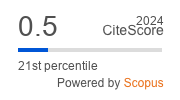The specific features of staphylococcal skin flora of sportsmen of different specializations
Abstract
The aim of research is to investigate the features of staphylococcal microflora of sportsmen of different specializations.
About the Authors
V. A. ZaborovaRussian Federation
PhD, lecturer of the chair of physical therapy and sports medicine
V. G. Arzumanyan
Russian Federation
Doctor of biology, head of the laboratory of fungi and bacteria physiology
T. A. Artemieva
Russian Federation
chief technologist of the laboratory of fungi and bacteria physiology
L. M. Butovchenko
Russian Federation
chief engineer of the laboratory of fungi and bacteria physiology
K. G. Gurevich
Russian Federation
MD, prof., head of the chair “A healthy lifestyle – is the key to successful development”
M. V. Terekhova
Russian Federation
post-graduate student of the chair “A healthy lifestyle – is the key to successful development”
References
1. Many P.S. Non-Preventing community-associated methicillin-resistant Staphylococcus aureus among student athletes // Journal of School Nursing. 2008. V. 24. № 6. P. 370–378.
2. Арзуманян В.Г., Зайцева Е.В., Кабаева Т.И., Темпер Р.М. Оценка стафилококковой и нелипофильной дрожжевой микрофлоры кожи у больных с кожной патологией при контактном способе посева // Вестник дерматологии и венерологии. 2004. № 6. С. 3–6.
3. Карпов И.А., Качанко Е.Ф. Внебольничные инфек ции, обусловленные метициллинрезистентным стафилококком (MRSA): подходы к антибактериальной терапии // Медицинские новости. 2006. № 10. С. 28–32.
4. Delorme T, Rose S, Senita J, Callahan C, Nasr P. Epidemiology and susceptibilities of methicillin-resistant Staphylococcus aureus in Northeastern Ohio // American Journal of Clinical Pathology. -2009. V. 132. № 5. P. 668–677.
5. Rim J.Y., Bacon A.E. Prevalence of community-acquired methicillin-resistant Staphylococcus aureus colonization in a random sample of healthy individuals // Infection Control & Hospital Epidemiology. 2007. V. 28. № 9. P. 1044–1046.
6. Ozaki K. Takano M. Higuchi W. Takano T. Yabe S. Nitahara Y. Nishiyama A. Yamamoto T. Genotypes, intrafamilial transmission, and virulence potential of nasal methicillin-resistant Staphylococcus aureus from children in the community // Journal of Infection & Chemotherapy. 2009. V. 15. №. 2. P. 84–91.
7. Fluegge K. Adams B. Luetke Volksbeck U. Serr A. Henneke P. Berner R. Low prevalence of methicillin-resistant Staphylococcus aureus (MRSA) in a southwestern region of Germany // European Journal of Pediatrics. 2006. V. 165. № 10. P. 688–690.
8. Stevens MP, Bearman G, Rosato A, Edmond M. Community-acquired methicillin resistant Staphylococcus aureus in a women’s collegiate basketball team // Southern Medical Journal. 2008 . V. 101. № 10. P. 1067–1068.
9. Buss B.F., Mueller S.W., Theis M., Keyser A., Safranek T.J. Population-Based Estimates of Methicillin-Resistant Staphylococcus aureus (MRSA) Infections Among High School Athletes—Nebraska, 2006–2008 // The Journal of School Nursing. 2009. V. 25. №. 4. P. 282–291.






































